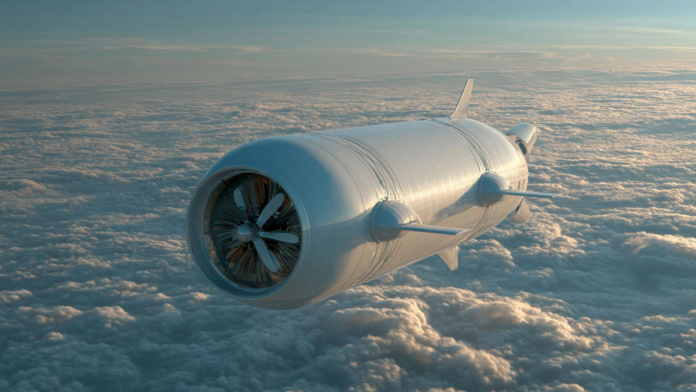We are all used to catching sight of wind farms dotted across hilltops while driving through the countryside. Offshore turbines, rising like silent giants out at sea, are also a familiar sight. But what you’re unlikely to have spotted is a flying wind turbine. The reason is simple: the technology has had little traction so far. Yet its potential to transform electricity generation is significant. In this article, we look at the alternatives being trialled in this field, and how the latest prototype works.
Airborne wind power: a brief history
The idea of harvesting energy from the skies is far from new. In fact, it was first proposed back in 1833 by Johann Adolphus Etzler, an American engineer who dreamt of using giant kites to power agricultural machinery. His efforts never quite took off, but the logic behind them persisted.
Since then, engineers have experimented with various approaches, most of which fall into two broad categories:
- Aerostat turbines: These use an airship filled with a light gas (helium or hydrogen) to stay aloft. Operating at higher altitudes allows them to capture stronger and more consistent winds. In these models, the generators are always integrated within the airship itself. This is the turbine type we will focus on in this article, one that has just achieved a record-breaking 1 MW output in China.
- Kite-based turbines: Instead of balloons, these systems rely on enormous computer-guided kites or wings. Their movements pull cables attached to ground-based generators, or occasionally to on-board devices. Google’s Makani project was a high-profile example, though it was ultimately abandoned after more than a decade of testing.
These airborne solutions aim to overcome the limitations of traditional turbines by harnessing faster and more reliable high-altitude winds that are inaccessible to conventional onshore and offshore systems. For now, however, they have had mixed fortunes. For example, Google’s Makani Airborne Wind Turbine project was ultimately scrapped after thirteen years of research. Will this time be different?
China’s record-breaking prototype
Developed by a Chinese company in partnership with Tsinghua University and the Chinese Academy of Sciences, the newest airborne wind turbine combines aerostat technology with wind turbines and delivers power at unprecedented levels.
The S1500 prototype, according to its developers, generates up to thirty times more energy than existing airborne models. The unit weighs about one tonne and contains twelve carbon-fibre microgenerators set into the hollow body of the airship.
The concept is similar to earlier projects: the goal is to access higher, steadier and faster winds than those blowing across land or open sea, thereby significantly increasing generation efficiency. More specifically, the researchers note that at its operating altitude wind speeds are about three times stronger than on the ground.
Main features of the new high-altitude turbine:
- Operating altitude: up to 1,500 metres
- Rated power output: 1 MW per turbine
- Generation system: 12 microgenerators
- Support system: helium-filled airship ensuring buoyancy and mobility
This form of airborne generation could prove especially valuable in remote mountainous areas, coastal zones where installing floating turbines is complex, and regions where mobility allows the technology to follow variable wind patterns. It could also provide renewable energy in humanitarian settings or refugee camps, similar to how other projects use solar power.
The challenges ahead
Despite the promise it shows, this technology faces notable technical challenges. Stability must be maintained against sudden gusts and pressure changes. Energy production must be optimised through real-time adjustments to blade orientation and speed. Safety is also critical, requiring high-resistance mooring cables and advanced electronic control systems.
Alongside this leap in high-altitude wind energy, a wave of innovation is also producing radical new designs here on the ground and at sea. For example, a bladeless turbine model is now in development, and so are offshore floating turbines built around a pyramid-like structure.
Sources:
Images:
- Header: Generative AI
- Interior: Wikimedia Commons


